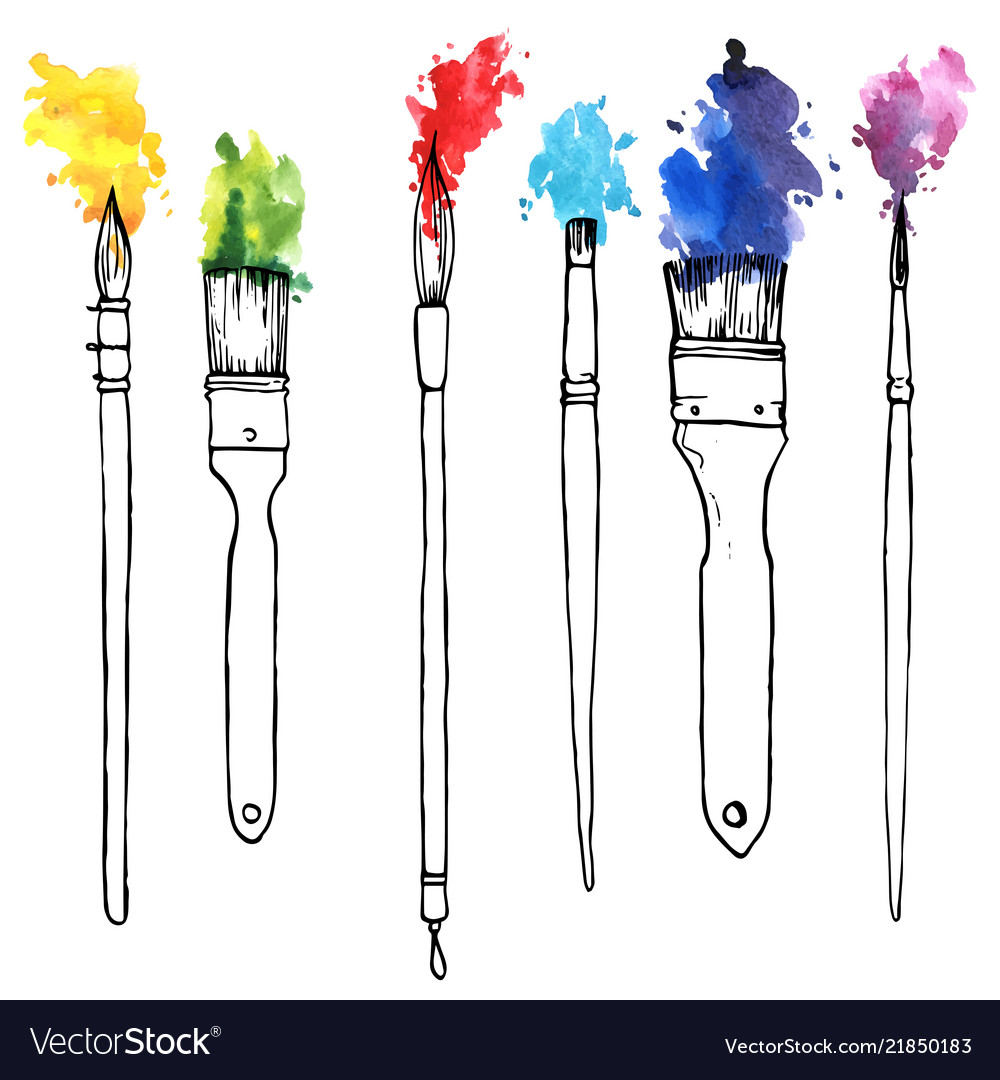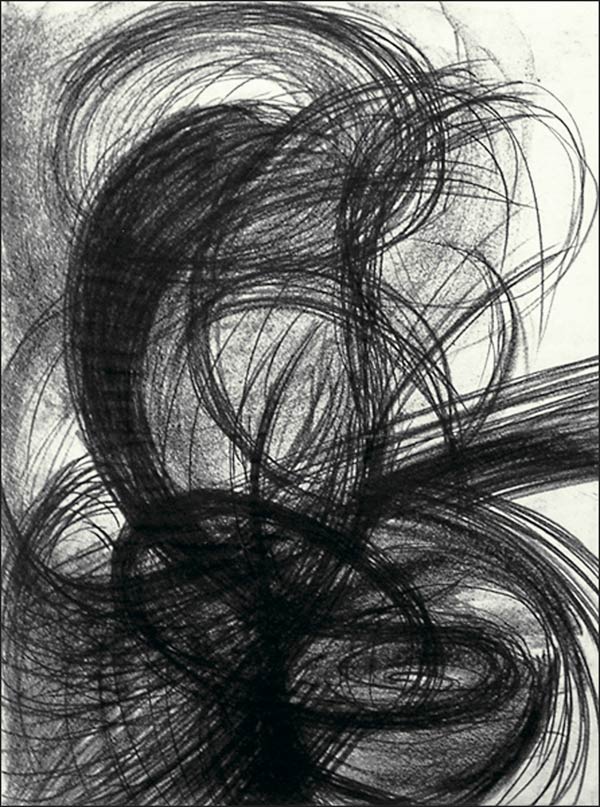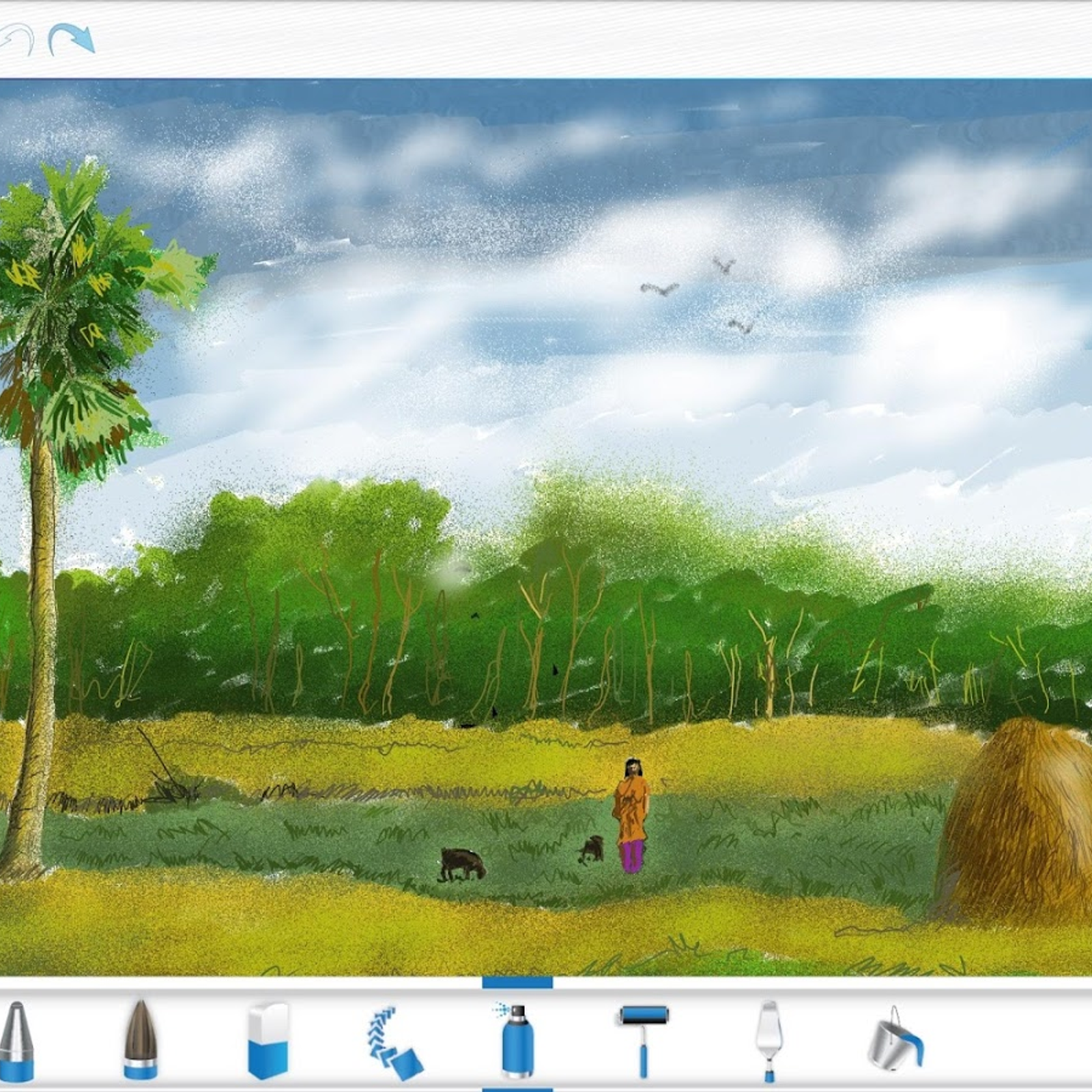Draw Sketch And Paint
Are you looking to improve your drawing skills? One of the most important tools for any artist is a good set of paintbrushes. Luckily, we've got you covered with this beautiful image of some high-quality brushes to inspire you.

But what makes a good paintbrush? Let's dive into some tips and tricks on how to choose the best brushes for your next art project.
First and foremost, consider the type of painting you'll be doing. Different brush types are better suited for different mediums (like watercolor, oil, or acrylic). Make sure you choose brushes that are designed for your specific medium to achieve the best results.
Next, think about the shape of the brush. Different brush shapes can create different strokes and effects. Round brushes are great for detail work, while flat brushes are ideal for creating smooth, even layers of color.
The material of the brush is also important to consider. Natural hair brushes (like those made from sable or squirrel hair) are more expensive but are ideal for watercolor and fluid painting. Synthetic brushes are a more affordable option and work well with heavier-bodied paints like acrylic and oil.
Another factor to consider is the size of the brush. The size of the brush should be in proportion to the size of your canvas or paper. If you're working on a larger surface, opt for a larger brush to save time. For smaller details, choose a brush with a smaller tip.
It's important to note that a good set of brushes can last a long time if properly cared for. Clean your brushes after each use with mild soap and cold water (hot water can damage the bristles). Store them upright (preferably in a container) to prevent bending or misshaping of the bristles.
Now that you have the tools, let's talk about some tips for improving your painting skills.
1. Practice makes perfect. The more you paint, the more comfortable you'll become with your brushes and medium.
2. Experiment with different techniques. Don't be afraid to try new things and see what works best for you.
3. Study other artists. Whether it's through YouTube tutorials or visiting art galleries, learning from others can help develop your own unique style.
4. Get constructive feedback. Share your work with others and ask for feedback on how you can improve. Don't be discouraged by criticism; use it as an opportunity to grow.
5. Take breaks. Painting for long periods can be tiring and dull your creativity. Take breaks to recharge your batteries and come back to your work with fresh eyes.
Now that you know how to choose the right brushes and have some tips for improving your painting skills, you're ready to take your art to the next level. Happy painting!
How to Choose the Perfect Paintbrushes for Your Art Projects
Choosing the right paintbrushes can be a daunting task, but it doesn't have to be. Here's a step-by-step guide on how to choose the perfect brushes for your next project.
Step 1: Consider the Type of Painting You'll Be Doing
Different brush types are better suited for different mediums. Make sure you choose brushes that are designed for your specific medium to achieve the best results.
Step 2: Think About the Shape of the Brush
Different brush shapes can create different strokes and effects. Round brushes are great for detail work, while flat brushes are ideal for creating smooth, even layers of color.
Step 3: Choose the Right Material
The material of the brush is also important to consider. Natural hair brushes (like those made from sable or squirrel hair) are more expensive but are ideal for watercolor and fluid painting. Synthetic brushes are a more affordable option and work well with heavier-bodied paints like acrylic and oil.
Step 4: Pick the Right Size
The size of the brush should be in proportion to the size of your canvas or paper. If you're working on a larger surface, opt for a larger brush to save time. For smaller details, choose a brush with a smaller tip.
Tips for Improving Your Painting Skills
Now that you know how to choose the right brushes, let's talk about some tips for improving your painting skills.
Tip 1: Practice Makes Perfect
The more you paint, the more comfortable you'll become with your brushes and medium. Set aside time each day to paint, even if it's just for a few minutes.
Tip 2: Experiment with Different Techniques
Don't be afraid to try new things and see what works best for you. Experiment with different brushes, colors, and mediums to find your unique style.
Tip 3: Study Other Artists
Learning from others can help develop your own unique style. Whether it's through YouTube tutorials or visiting art galleries, studying other artists can inspire and inform your own work.
Tip 4: Get Constructive Feedback
Share your work with others and ask for feedback on how you can improve. Don't be discouraged by criticism; use it as an opportunity to grow.
Tip 5: Take Breaks
Painting for long periods can be tiring and dull your creativity. Take breaks to recharge your batteries and come back to your work with fresh eyes.
In conclusion, choosing the right paintbrushes is essential for any artist looking to improve their skills. By considering the type of painting you'll be doing, the shape and material of the brush, and the brush size, you can create beautiful works of art. And with some tips for improving your painting skills, you'll be well on your way to becoming a master artist.



Post a Comment for "Draw Sketch And Paint"